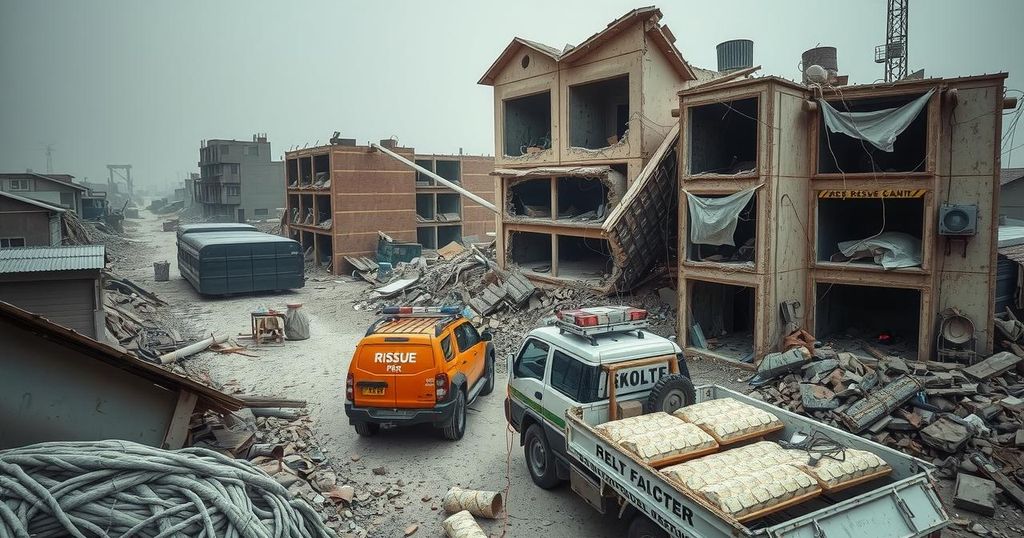Myanmar Earthquake: Rising Death Toll and Extraordinary Rescues Amid Crisis

A major earthquake in Myanmar has anticipated a death toll exceeding 3,000, with significant shortages of essential supplies and humanitarian needs rising rapidly. Notable rescues continue to occur, including a 63-year-old woman saved days after being trapped. As civil unrest complicates the rescue operations, the international community’s intervention is critical to address the worsening humanitarian crisis.
The recent earthquake in Myanmar has led to an expected death toll surpassing 3,000, with over 2,000 confirmed fatalities, amidst a worsening humanitarian crisis due to ongoing civil unrest. Rescue operations yielded a remarkable rescue of a 63-year-old woman in Naypyitaw, yet hopes for additional survivors are fading. As stated by Senior General Min Aung Hlaing, at least 441 individuals remain unaccounted for following the 7.7 magnitude quake.
The United Nations Office for the Coordination of Humanitarian Affairs (OCHA) has raised alarms over dwindling survival chances and escalating humanitarian needs, particularly for clean water, shelter, and medical supplies. UNICEF’s Julia Rees emphasized that families are experiencing significant shortages of essential resources, as many affected individuals spent the nights outdoors due to a lack of basic amenities.
In total, the World Health Organization reported that over 10,000 structures collapse or sustain severe damage from the quake. Neighboring Thailand faced its crisis, with the collapse of a construction site in Bangkok resulting in 20 deaths and numerous injuries. Investigations have been launched to assess the structural integrity that contributed to the collapse.
Despite the dire situation, remarkable rescues have occurred, including the retrieval of 63-year-old survivor 91 hours post-quake. Myanmar’s fire department reported that 403 individuals have been rescued with recoveries still ongoing. International aid teams have slowly progressed, facing challenges due to inadequate machinery. Reports indicate successful rescues by Chinese teams, along with rescue stories emerging from multiple sources.
The urgent need for humanitarian aid is exacerbated by pre-existing turmoil, as over 3 million individuals were displaced by civil conflict prior to the quake. The military’s seizure of power in 2021 has contributed to widespread instability and has hindered aid efforts. The National Unity Government called for a ceasefire to facilitate aid delivery and for the international community to intervene directly.
Amid ongoing military actions, concerns over humanitarian access and aid distribution persist. The junta has previously obstructed foreign assistance efforts during past disasters. However, General Min Aung Hlaing has signaled acceptance of external aid, indicating potential for future cooperation. All parties emphasize the critical timeframe for relief, as the humanitarian situation continues to evolve amidst both natural devastation and civil conflict.
In summary, the earthquake in Myanmar has considerably worsened the country’s humanitarian crisis, affecting thousands and generating an urgent call for aid. Outstanding rescues have provided glimmers of hope despite high casualty figures and missing individuals. Regional and international intervention remains essential in addressing the needs of affected populations, especially as military actions threaten to impede effective relief efforts. Continuous monitoring and cooperative efforts are vital to mitigate the situation.
Original Source: www.cbsnews.com







